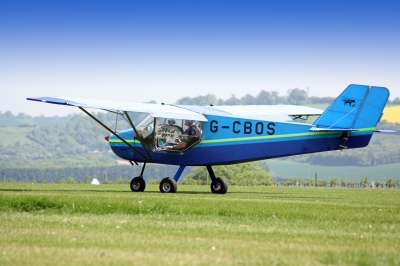 GENERAL aviation traffic – or non-commercial flights – has been transferred to Sangley Point in Cavite, an hour from Manila, to decongest the Ninoy Aquino International Airport (NAIA), the Civil Aviation Authority of the Philippines (CAAP) and Manila International Airport Authority (MIAA) jointly announced recently.
GENERAL aviation traffic – or non-commercial flights – has been transferred to Sangley Point in Cavite, an hour from Manila, to decongest the Ninoy Aquino International Airport (NAIA), the Civil Aviation Authority of the Philippines (CAAP) and Manila International Airport Authority (MIAA) jointly announced recently.
The government also banned food and fish runs – small planes delivering cargoes of the foodstuff cargoes from the provinces – from using the Manila hub.
The transfer to Major Danilo Atienza Air Base was ordered by the Department of Transportation and Communications and CAAP in Department Order No. 2013-08.
Corporate jets and air taxi landings are also restricted to two cycles per hour daily between 11:00 pm and 11:00 am the next day while aircraft not exceeding 5,682 kilograms are permitted to land only between 1:00 pm and 2:59 pm and from 8:00 am to sunset, and only when the runway 13 is not in use.
The order also suspends, amends and revokes previous memoranda, orders and issuances that are inconsistent with the Order 2013-08.
MIAA general manager Angel Honrado said the average volume of general aviation traffic at NAIA is 7 to 8 events per hour compared with the 40 events per hour of commercial traffic, which is 50% of the total traffic.
“The challenge with general aviation is it’s unprogrammed, you don’t know in advance when they’ll take off or land, unlike commercial flights which are scheduled and given time slots,” Honrado said, adding that by international practice, general aviation is not given slots but in a good number of airports around the world.
“General aviation flights are not within the major airways and main terminals,” he said.
Asked whether the transfer is a long-term solution, Honrado said, “We’ll be asking the question: Removing general aviation – will it create a total solution to the congestion and delay? The answer is still no.”
He said there is still “technical intervention”. But he said the upgrading of CAAP’s systems and training their personnel is a “great step” towards minimizing congestion and delays.
On the issue of congestion, Honrado said, “There is no single formula; there is no single action that they could take which will eliminate this (congestion).” He said it should be a combined effort of the Civil Aeronautics Board, CAAP and MIAA.
“Marami tayong dapat gawin (We have a lot to do) and we recognize all these,” he added.
He said the move is a short-term solution.
Honrado said theoretically, since there will be fewer take-offs, runway traffic will be lighter.
He also noted suggestions for a second runway, which, he said, will definitely ease traffic and double NAIA’s existing capacity. But the question is where to put the second runway.
In preparation for the transfer of general aviation traffic to Sangley, the DOTC and CAAP signed a memorandum of agreement with the Department of National Defense and the Philippine Air Force (PAF) to specify the terms of transferring the air force’s facilities to the recently evacuated Lumbia Airport in Cagayan de Oro.
Operations at the Cagayan de Oro hub were transferred to Laguindingan International Airport in Misamis Oriental, which opened on June 15.
Honrado said he does not see any big impact of the order on cargo operations at the NAIA since cargo flights have their own time slot. He said cargo operators like FedEx are not considered general aviation.
Meanwhile, CAAP deputy director general John Andrews said there is a plan to turn Sangley Point into a general aviation area.
“If the plan materializes, we still have to discuss about this project, we will have phase two.”
“Sangley will be made into a second Manila airport. Part of Manila is Sangley,” Andrews said, adding that the Cavite hub will handle both domestic and international operations.
“We’re still talking about it. But this is the most feasible project as of now,” Andrews noted.
He also disclosed the possibility of making Davao, Puerto Princesa, Iloilo and Bacolod international gateways, saying such a move would “spread” traffic out of Manila.
Image courtesy of Simon Howden /FreeDigitalPhotos.net





